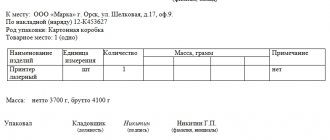What is culture
In Latin, the word "cultura" originally meant "cultivation."
How did it happen that over time the term changed its meaning? In fact, the meaning of the word “culture” remains the same. Upbringing, development and education are the cultivation of the human soul. It was culture that helped man move from a primitive communal tribe, first to an agrarian revolution, and subsequently to a cultural revolution. Today the concept includes various areas of human activity, being a set of skills, abilities and products of self-expression. Cultural values are an integral part of the life of society. Let's take a closer look at them.
Cultural values - what are they?
Oddly enough, this concept can be interpreted in different ways. First option: cultural values are the moral principles of a person. It is according to established patterns of behavior that a person lives and thinks. But when these boundaries of moral norms are violated, a person is automatically recognized as uncultured. Moreover, this does not interfere with his life, but sometimes it can shock those around him.
The second interpretation is the most popular. Cultural assets are buildings, paintings, objects, technologies and objects. Everything that can be seen or understood. All this knowledge and the material product of human activity helped our society make a rapid leap in its development.
The third option for the meaning of cultural values is a product of human activity that is hidden from our view in people’s heads. This includes knowledge, science, skills and scientific values.
Well, the last interpretation of the cultural values of society is languages, traditions, crafts, folklore. All that is why we consider ourselves a civilized society with a rich history.
Do different countries have the same or different cultural values?
If you look at the interpretation of the term itself, everything becomes clear.
Each country has its own history, set of laws and, as a result, a unique culture. Accordingly, values will be different everywhere. Why did it happen? Countries developed under different conditions, and their religions were also different. But it is human beliefs that make up a huge layer of culture. Our country has been pagan for a long time, and this could not but affect modern society. Russians have been considered barbarians for many centuries, and now foreigners who have never been to our country and only know about it from news reports have the same opinion.
But this does not mean that our ancestors did not have culture. The pagan faith demanded not only strict submission to the gods, but also the creation of temples, totems and monuments. And when polytheism was replaced by monotheism, people did not abandon their heritage. They simply remade the Byzantine faith, adapting it to our country. Thus, it turned out that in the process of various evolutions and revolutions, people and their consciousness changed.
What are cultural norms?
Usually this concept refers to standards of behavior. Moreover, like the cultural values of peoples, the norms are different in all countries. They are expressed in the form of rewards and punishments and are regulated by the state. In our country, cultural norms are not just lip service. They are written in the Constitution, which limits human rights within reasonable limits. But at the same time, it gives him maximum freedom of action within reason. In case of non-compliance with cultural norms, a person will face regulated punishment.
At all times it was different: exile, execution, imprisonment. And in our time, all these methods are used, except that there is a moratorium on the death penalty in our country. The same cannot be said about freer countries, such as the USA.
Human cultural values
There are many peoples and nationalities on earth. Each individual person has a set of cultural values and norms. What are they like? It is clear that each country has its own concept of culture, but most of the values are still similar:
- The desire to know our history and understand the essence of what is happening to us and our homeland. This value called “love for the Fatherland” is embedded in every person. After all, only a person who knows his history can create future countries.
- Knowledge of the characteristics of national creativity. Folklore, crafts, traditions and customs are rarely studied in school. This knowledge is given to a person in the family. And only thanks to them can a person better know who he is and what he does in this world.
- Religion is one of the basic cultural values of a person. It is she who sets the unwritten rules, not regulated by the constitution, by which all people should live.
Objects of research
The most complete list of objects that can be provided for research to establish the cultural, artistic, scientific, historical value of objects of art, antiquities, weapons, objects of immovable heritage, etc., is set out in Article 7 of the Law of the Russian Federation “On the export and import of cultural property” " It includes:
- Historical values, including those related to historical events in the life of peoples, the development of society and the state, the history of science and technology, as well as those related to the life and work of outstanding personalities (state, political, public figures, thinkers, scientists, literature, artists) ;
- Objects and their fragments obtained as a result of archaeological excavations;
- Artistic treasures, including:
- Paintings and drawings are entirely handmade on any basis and from any materials;
- Original sculptural works from any materials, including reliefs;
- Original artistic compositions and installations from any materials;
- Artistically designed religious objects, in particular icons;
- Engravings, prints, lithographs and their original printed forms;
- Works of decorative and applied art, including art products made of glass, ceramics, wood, metal, bone, fabric and other materials;
- Products of traditional folk arts and crafts;
- Components and fragments of architectural, historical, artistic monuments and monuments of monumental art;
- Antique books, publications of special interest (historical, artistic, scientific and literary), separately or in collections;
- Rare manuscripts and documentary monuments;
- Archives, including photo, phono, film, video archives;
- Unique and rare musical instruments;
- Postage stamps, other philatelic materials, separately or in collections;
- Ancient coins, orders, medals, seals and other collectibles;
- Rare collections and specimens of flora and fauna, items of interest to such branches of science as mineralogy, anatomy and paleontology;
- Other movable items, including copies, that have historical, artistic, scientific or other cultural significance, as well as those taken under state protection as historical and cultural monuments.
Cultural values of the state
Citizens of one country represent a single group, united by a common history and a common future. The values of the entire society as a whole include the cultural norms of each individual person. What's the difference then? In global thinking. The rulers of countries can change cultural values if they want. But people have a very bad attitude towards such changes, so they happen infrequently.
The main task of any state is to preserve and enhance cultural values. That is, it should help talented people to realize themselves, scientists to make discoveries, and architects to build buildings. Today, intangible cultural values fade into the background, and the product of human activity that brings some benefit to society and the state comes to the fore.
Problems solved by value determination examination
Objects of art, antiques, weapons, buildings built many years ago may have value for their owner or a limited circle of people, but this does not automatically make them valuable from a cultural or historical point of view. A thing can be as ancient as you like, but this does not make it absolutely valuable.
To be classified as cultural and historical values, an object must have significance for the world community and have its own value on the world market of cultural and historical values. The definition of world cultural property is set out in the 1954 Hague Convention for the Protection of Cultural Property in the Event of Armed Conflict, which was ratified by the USSR in 1988. And also in the Convention on Stolen or Illegally Exported Cultural Objects of 1995, according to which valuable objects are those that are important for archaeology, prehistory (anthropology), history, literature, art or science.
This definition is quite vague and ambiguous, like any definition that tries to answer the question - what are cultural and other values. Thus, of two houses built at the same time, one may have cultural and historical value, while the other may not. The same applies to various antiques, works of art, and weapons. The value of an item depends on the craftsman, style of work, material, age, and many other aspects. Thus, a person who is not a professional in a particular field of art, science or culture cannot give an adequate assessment of a particular object or work. Therefore, an examination is being carried out.
The examination solves two main problems:
- Determines whether the subject under study is of cultural, artistic, scientific or historical value.
- If necessary, determines the cost of this item.
Thus, the expert opinion can answer a variety of questions:
- Is it possible to export this item outside the Russian Federation, and, if so, what will be the amount of customs duty?
- Does it make sense to include this item in a museum or private collection?
- Is this building subject to demolition or restoration?
- Is this item a motive for committing a crime?
- Whether a crime was committed - for example, whether the original was sold for a market price or whether it was a fake.
The conclusion is also used when buying and selling a valuable object, when distributing an inheritance.
How cultural values are protected
Today, many states are concerned about the increasing growth of vandalism.
That is why many of them united and set themselves the goal of protecting cultural values. Thus, it was decided to protect buildings, paintings, and sculptures. Yes, this is a big part of any country's heritage. It is from these monuments that have survived to our time that we can judge how our ancestors lived. But culture is not only material values. This term refers to both our mentality and language. And few people monitor the purity of their speech. Today there is so much slang in the Russian language that it is difficult to talk about the culture of the language. This also applies to religion. If churches, mosques and other religious buildings are protected and, as a result, preserved, then the faith itself changes from year to year.
Legal aspects
One of the common tasks that requires establishing the cultural and historical value of an object is its removal from the territory of the Russian Federation. This process is regulated by the Law of the Russian Federation “On the export and import of cultural property” No. 4804-1 of April 15, 1993.
- Article 7 defines the categories of objects (cultural values) falling under the scope of this Law.
- According to Article 18 of the Law, cultural property declared for export is subject to mandatory examination.
- Article 9 of the Law defines cultural values that are not subject to export from the Russian Federation.
Also, determining the cultural and historical value of various objects is important in the investigation of criminal cases, determined by the following articles of the Criminal Code of the Russian Federation:
- 146 – violation of copyright and related rights.
- 159 – fraud – that is, the production and sale of counterfeit objects of art.
- 164 - theft of objects or documents of special historical, scientific, artistic or cultural value, regardless of the method of theft.
- 190 - failure to return within the prescribed period to the territory of the Russian Federation objects of artistic, historical and archaeological property of the peoples of the Russian Federation and foreign countries.
- 222 - illegal acquisition, transfer, sale, storage, transportation or carrying of weapons, their main parts, ammunition, explosives and explosive devices.
- 243 - destruction or damage to historical and cultural monuments
Perspective for the development of cultural values
As mentioned above, the world does not stand still.
Culture and cultural values change and transform. But you shouldn't regret it. This is a natural stage of development. You need to believe that everything that happens is always for the better. Of course, this does not mean that you need to kill cultural monuments of past centuries with your own hands. Although sometimes you can be very surprised to see how quickly street art began to be considered art. It’s not bad when artists paint gray, boring houses, but when they start creating on churches or monuments, it makes you shiver. To prevent this from happening, every person must understand the line of what is permitted and not cross it.
The cultural assets of the 21st century generation are largely located online. Therefore, it is difficult to imagine how the collection, systematization and preservation of this type of creativity will occur in the future. Perhaps, separate servers will be created where paintings by artists, songs and films will be stored; they will be the rebirth of modern museums.
Research methods
The methods by which the value of an object is established can be divided into two groups.
Finding out the various characteristics of the research object.
These include:
- Authorship.
- Date and place of manufacture.
- The material from which the object is made.
- The style in which it is made.
- Whether the object was altered later and whether restoration work was carried out on it.
- State of the object.
- Is it original or a copy.
These characteristics are determined using chemical-technological, digital, graphological and other types of art analysis.
Direct determination of the value of the object under study in the modern world market, from the point of view of world cultural, historical heritage, and scientific value.
To do this you need to install:
- The degree of uniqueness of an object in the country where it is located and in the world. Uniqueness is assessed according to several criteria: time, authorship, material, manufacturing method.
- The value of other works by this author.
- The extent to which an object reflects the historical era during which it was made.
- To what extent an object reflects a particular culture or ideology.
- Emotional perception of the consumer (viewers, listeners).
- Whether the object can be used for academic purposes.
- Is the object valuable for the further development of science or scientific history?
A significant part of this work is carried out through research of the modern market of a particular area of culture and art, and it is carried out by art historians - specialists in this field.










